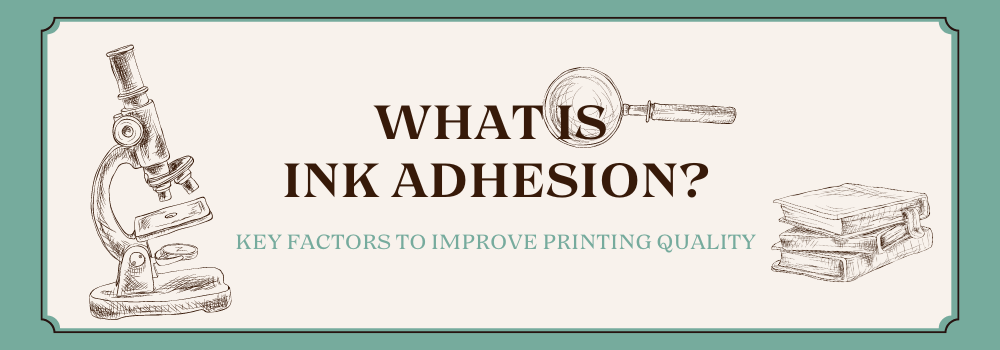

Understanding Ink Adhesion in Digital Printing
Ink adhesion refers to the ability of ink to bond effectively to a substrate’s surface. It is a critical factor in successful digital printing. Whether printing on plastic, metal, glass, or paper, ink adhesion directly impacts the print’s quality, durability, and appearance. Poor adhesion can result in fading, scratching, or peeling, which is unacceptable for high-demand applications like advertising and packaging.
Several key elements influence ink adhesion in digital printing:
Substrate Type: Materials like paper readily absorb ink, while plastic, metal, and glass often require surface treatment for better adhesion.
Ink Formulation: The chemical composition of ink is crucial. Choosing ink specifically designed for the substrate ensures high print quality. For example, eco-friendly inks from Chromoink are designed for various materials.
Printing Environment: Factors like temperature and humidity affect ink adhesion. A stable environment helps prevent ink from peeling or applying unevenly.
Surface Treatment: Untreated surfaces can lead to poor adhesion. Techniques like surface cleaning, corona treatment, or plasma treatment can significantly improve adhesion.
The adhesion between ink and substrate involves both physical and chemical interactions. Common techniques include:
| Adhesion Mechanism | Description | Application Technology |
| Thermal Curing | Static electricity attracts toner to the substrate, and heat is applied to solidify the bond | Laser Printing |
| UV Curing | UV light is used to cure the ink rapidly, forming a strong adhesive layer | UV Inkjet Printing, suitable for glass and plastic |
| Chemical Adhesion | Chemical reactions promote bonding between the ink and the substrate | Specialized Coating Inkjet Printing |
Here are some effective methods to boost ink adhesion based on substrate characteristics and printing requirements:
Surface Cleaning: Ideal for substrates like plastic, metal, and glass, cleaning removes dust, oils, and contaminants that affect adhesion.
Corona Treatment: Best for low surface energy materials like polyethylene or polypropylene. It increases surface tension, making it easier for the ink to bond.
Plasma Treatment: Suitable for smooth and low surface energy substrates like glass and metal. This alters the surface chemistry to improve ink adhesion.
Flame Treatment: Effective for large plastic surfaces, it quickly enhances adhesion for applications like packaging printing.
Primer Use: When other treatments fail, a primer enhances the ink-substrate bond. This method works well on metals, glass, and ceramics requiring high durability.
UV Curing: UV curing quickly hardens ink on substrates like glass, metal, or acrylics, making it highly durable and scratch-resistant.
Chromoink offers specialized digital printing inks. Our UV-curable inks are ideal for materials like glass, metal, and plastics, while eco-solvent inks suit vehicle wraps and outdoor advertising. Choosing the right ink enhances durability and aesthetics.
Ink adhesion is vital for digital printing quality and durability. By selecting appropriate substrates and inks and utilizing surface treatment techniques, you can significantly improve adhesion. Chromoink offers high-quality digital inks and expert solutions to help you excel in competitive markets. Visit our website at www.chromoink.comfor more details.